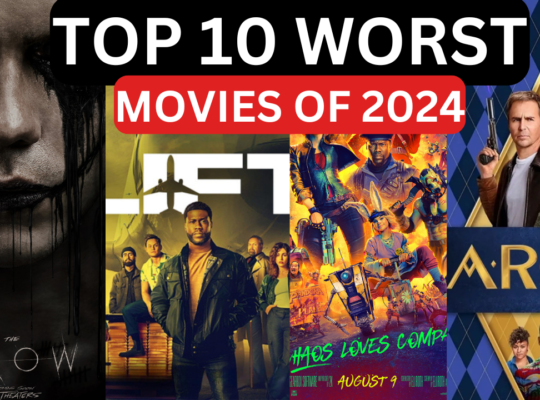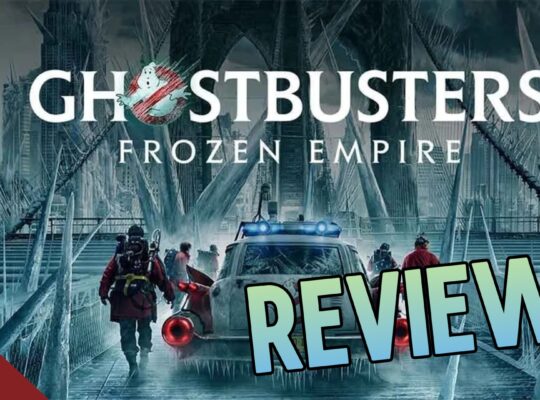“Killers of the Flower Moon” takes us on a historical journey into the annals of the Osage tribe’s troubling past. In this drama, Leonardo DiCaprio takes the lead role, but does the film manage to captivate its audience and bring this dark history to light?

At the heart of the movie are the intricate and chilling events that transpired when the Osage Indians discovered oil on their lands. The narrative revolves around the ruthless pursuit of this valuable resource by outsiders, ultimately leading to tragic consequences.

Leonardo DiCaprio’s performance as Ernest Burkhart is commendable. He successfully embodies a character who finds himself ensnared in a complex web of greed, manipulation, and violence. Despite the compelling performances of the main cast, the film’s pacing is uneven. While it maintains a dry and slow atmosphere throughout, pivotal scenes that should have elicited more emotional impact seem rushed.

The film’s soundtrack and score don’t particularly stand out but blend seamlessly into the background, complementing the storytelling. Mind you, this doesn’t mean it was bad, as we hear tribal sounds and chats in important parts of the movie.

“Killers of the Flower Moon” carries a straightforward and potent message – the dark history of exploitation and violence against indigenous communities. The theme underscores the ruthlessness of the white settlers in their quest for wealth at the expense of the Osage Indians.

Set against the backdrop of Indians discovering oil and ruthless white men determined to take it from them, the plot maintains one’s attention, even though it’s marred by pacing issues. The film is often dry, and it struggles to match the intensity and intrigue of Scorsese’s earlier work like “The Departed.”

“Killers of the Flower Moon” does not shy away from portraying brutal and unsettling scenes, notably during the autopsy and a shocking explosion. However, these impactful moments tend to be fleeting in a movie that’s lengthy and sometimes moves at a slower pace than desired. The runtime feels excessive, and the absence of subtitles in key dialogues, particularly when the characters converse in their native language, leaves the audience feeling somewhat disconnected.

As the story unfolds, you’re confronted with an unsettling representation of the KKK being celebrated by Osage Indians, an incident that leaves a deeply disturbing impression.

The movie concludes with an ending that effectively aligns with the actual historical events, leaving little room for deviation. It feels like a historically respectful closure rather than a dramatically satisfying one. The film wraps up with a final act that seems to drag its feet, leaving you to ponder the narrative’s unwavering focus on Robert De Niro’s character.
While the film’s long duration may test the patience of some viewers, its message as a testament to the Osage tribe’s history remains its standout feature. “Killers of the Flower Moon” doesn’t cater to a broad audience; instead, it’s a niche representation of a significant historical event. If you appreciate old-school storytelling and historical dramas, this film might be your cup of tea.
As for the recommendation, this movie is unlikely to captivate the casual moviegoer due to its pacing and detailed historical context. Its appeal primarily lies with fans of old-school storytelling and the very specific target audience for whom this film was created.
“Killers of the Flower Moon” often feels like it should have been a limited TV series. The constraints of a feature film result in its being overly long and occasionally confusing regarding certain plot points, such as the motivations of the Osage women marrying white men.

Emotionally, the film doesn’t provoke strong reactions but rather invites viewers to contemplate the Osage tribe’s harrowing history and their long-overdue portrayal on the big screen.
Visual and auditory elements in the movie are unremarkable, with the film’s emphasis on storytelling and performances.
Character development in “Killers of the Flower Moon” is uneven. Robert De Niro’s portrayal of William Hale as a ruthless businessman stands out, while Leonardo DiCaprio’s character, although portrayed convincingly, undergoes limited growth. The most well-rounded character is Lily Gladstone’s Mollie Burkhart.
The film’s strengths primarily lie in the cast’s strong performances, whereas its weaknesses manifest in its lengthy runtime and uneven pacing.

Compared to recent films in various genres, “Killers of the Flower Moon” doesn’t rise to the top. It finds itself positioned at the lower end of the spectrum, particularly when compared to more dynamic and engaging contemporaries.
However, it’s crucial to note that the film’s primary audience, the Osage Tribe, is likely to appreciate this cinematic representation of their history, making it a meaningful and commendable endeavor.
In conclusion, “Killers of the Flower Moon” may not be a groundbreaking cinematic experience. It is better suited for streaming and historical appreciation rather than mainstream box office success.
On a scale of 1 to 10, the film earns a respectable 6.5. It might not be for everyone, but it serves as an important platform for acknowledging the dark chapters of history, and that in itself is a valuable contribution.





